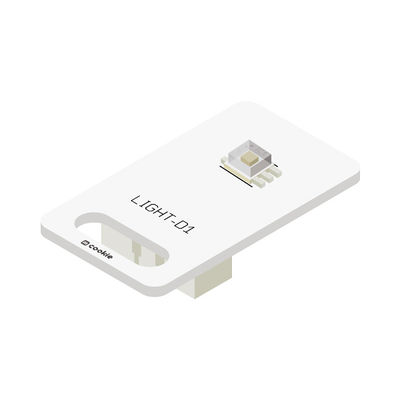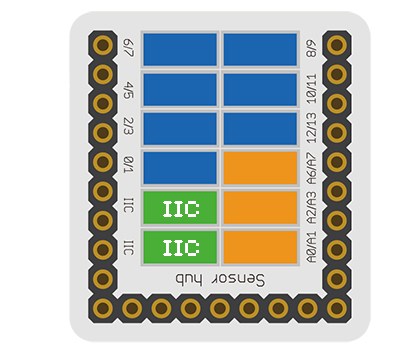Difference between revisions of "Sensor-Light-D1"
From Microduino Wiki
(→Introduction of the Sensor Pin) |
|||
| Line 10: | Line 10: | ||
==Introduction of the Sensor Pin== | ==Introduction of the Sensor Pin== | ||
| − | {{ | + | {{ST_Pinout |
| − | | | + | |st_name=Light D1 Sensor |
| − | | | + | |pin3=IIC SDA |
| − | | | + | |pin4=IIC SCL |
}} | }} | ||
| + | |||
==Features== | ==Features== | ||
*Adopt TSL2561 light sensor, which has optional address; | *Adopt TSL2561 light sensor, which has optional address; | ||
Latest revision as of 23:10, 30 March 2017
| Language: | English • 中文 |
|---|
|
The product number of Microduino-Light-D1 is: MSDT41 Microduino-Light-D1 is a digital light sensor module, which can detect the light intensity. .
ContentsIntroduction of the Sensor Pin
Features
Specification
Document
DevelopmentProgram Download
Programming
Hardware Setup
Result
ApplicationIt can be used to detect the environment light intensity, and also can be used in devices such as light-operated switch and so on.
PurchaseHistoryGallery
File:Microduino-Light-D1-f.JPG Sensor-Light-D1 Front
File:Microduino-Light-D1 -b.JPG Sensor-Light-D1 Back |


